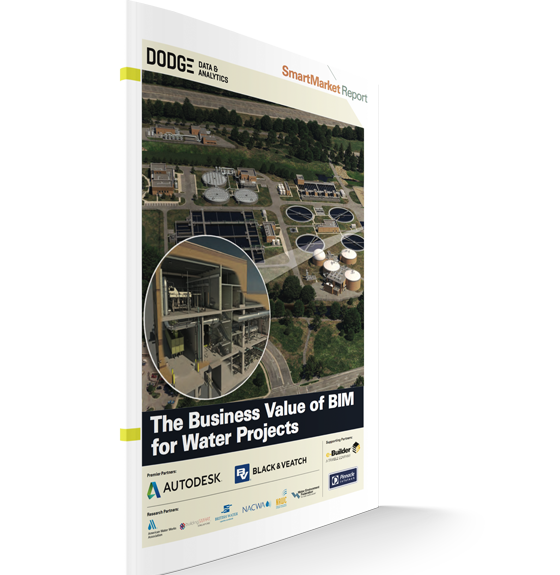The technical complexity of water projects and the intensity of operations and asset management functions at completed facilities all suggest that BIM (building information modeling) offers great advantages for this sector. Yet, in the 2012 Business Value of BIM for Infrastructure SmartMarket Report, the water sector had one of the lowest levels of BIM implementation of the seven infrastructure sectors examined, with only 30% of respondents reporting that they implement BIM on more than half of their water projects.
The new study, conducted five years later, strongly demonstrates the advance of BIM usage by engineers, contractors and owners for water projects, bringing it very much in line with other sectors in terms of the benefits BIM generates, and highlights the unique aspects of BIM implementation for these projects.
This study reveals the value that owners, engineers and contractors in the water/wastewater sector derive from BIM, both through new data demonstrating the benefits, ROI and investments in BIM in this sector and in five case studies that provide real world examples of how enhanced processes enabled by BIM are improving water projects. Data from the study includes:
- The increasing rates of implementation by project type among BIM users now and in the future
- The benefits of using BIM, the investments users are making to enhance those benefits, and its perceived ROI
- The level of expertise in BIM across project team members and the improved outcomes of experienced teams
- Use of BIM for facility operations and asset management in water projects
While currently most respondents do not report that BIM experience is required for the selection of design or construction teams, most of those who do not require that experience do still encourage it. As building information modeling experience becomes more common with water projects, the experience requirement is likely to shift, meaning that companies not currently using BIM may need to acquire those skills.

